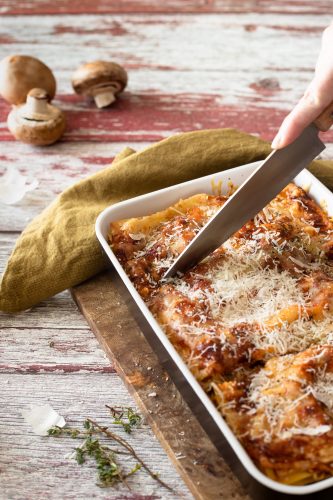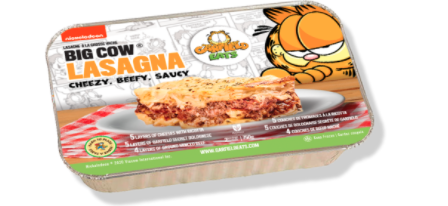Lasagna: A New Biofuel?

Today, I’m answering questions nobody would ever think to ask. I figured out exactly how much lasagna it would take to fuel a car.
You’re probably wondering what caused me to calculate it all out. To be honest, I’m still figuring out why I ran with it. However, I owe this entire trip of an article to Artefacts Studio’s Garfield Kart.
One of the many items players can collect during a race is lasagna. When the lasagna is used, it gives the racer a temporary speed boost. A stray thought popped into my head, and it left me wondering. How much lasagna would it take to fuel a car?
Surprisingly, this isn’t that hard to figure out. All I needed to do is find how much lasagna is equivalent to one gallon of gasoline. The entire process revolves around conversion factors.
In order to have proper results, I wanted to find lasagna with a nutritional label for easy access to information. Luckily for me, I knew about Garfield EATS, a Garfield-themed restaurant that shut down only recently. However, on their website, they sell one and only one food product, lasagna, and it shows its nutrition label.

Specifically, I’ll be solving for how many Garfield branded lasagnas are used. One lasagna will be counted as one tray or 750g. The easiest way to convert gasoline to lasagna is by using kcal/g as my unit. Calorie with a capital “C” is the same as kcal.
With a quick Google search, gasoline is 10 kcal/g. Dividing the calories one serving of lasagna, 430 kcal, by the size of it, 250g, gives 1.73 kcal/g. All I have to do next is find how many kcals are in a gallon of gasoline. Converting a gallon to grams to kcal results in 37,854.11784 kcal
Now, take that number and divide it by 1.73 kcal then divide it again by 750g of lasagna. This long chain of conversions led me to learn 1 gallon of gas is equivalent to 29.3442773953 lasagnas. Simply use this conversion to calculate how many lasagnas would fuel any car.
However, I wanted to go further than that. I wanted to learn how many lasagnas were needed to complete 1 race in Garfield Kart. This was a tad more complicated to calculate out. Not only did I need to find the distance of a full race, but I also needed to find a car and its gas mileage.
The race track I’ll be using is Catz in the Hood, the very first level of the game. I don’t have much car knowledge, so I picked a car I founded on multiple best racing car lists. Once I picked a model, I searched the best of that model, a 2020 Ford Mustang Shelby GT500.
Now, comes the tough part. Because the tracks don’t have their distances listed, I needed to figure this out somehow. The solution was an odd one, the height on Jon’s, Garfield’s owner, head. He is one of the starting characters you can play in the game.
Jon has a cannon height of 6ft, and after lining him up to 6 rulers, I found out his head was 21 inches tall. Using his head as a reference, I measured the length of the back of a car to the back of the front wheels. When racing, you can’t see the front of the car, but you can see the back of the front wheels.

Next, I needed the speed of the car. I used the Woofmobile with no speed boosters, one of two starter cars. Using the bridge in Palerock Lake, the car traveled 1058 in/sec. A quick conversion to mph reveals that the car travels at 60 mph. Finding the distance of a race is a breeze from here.
I rearranged the equation for speed to solve for distance, d=st. I averaged out three races where I avoided all obstacles and speed boost to keep the calculations simple. One race takes 128 seconds. From there I solved for the total distance of three laps, 2 2/15 miles.
The very last step was to use the Mustang’s fuel mileage, 12 city and 18 highway, to figure out how much gas was used. 16/135 g – 8/45 gal or 3.47784 – 5.21676 lasagnas would be needed to complete a race.
Now we know what the gas to lasagna conversion factor is, but can you actually fuel a car with lasagna? I went straight into researching biofuels. Biofuels often use raw materials, but those materials vary from each type of biofuel. I knew about biodiesel and bioethanol, but they can’t be used in normal cars. However, I later found biobutanol, which can be used in the average car.
Sadly, I didn’t find promising results. I thought maybe lasagnas could be converted into biofuel, but meats and cheeses haven’t shown great results in this area. It’s likely other raw materials in lasagna could, but I was hoping for the full product. Maybe in the future, there’ll be a breakthrough in lasagna-fueled cars.
